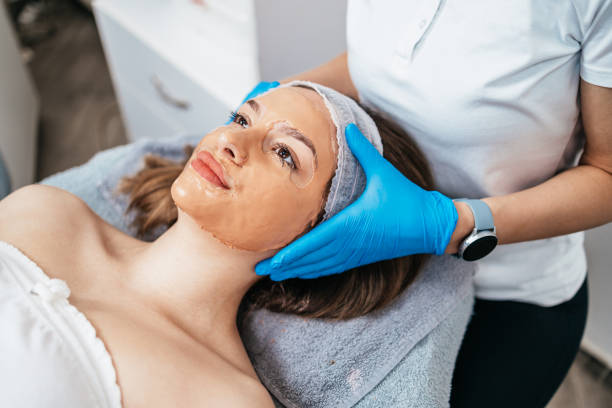The Role of pH in Chemical Peels and Why It Matters

Strong 8k brings an ultra-HD IPTV experience to your living room and your pocket.
The role of pH in chemical peels is crucial in determining their effectiveness and safety. The pH scale, which measures how acidic or basic a substance is on a scale of 0 to 14, is central to the performance of chemical peeling agents used in both clinical and at-home settings. Chemical Peels in Islamabad, Rawalpindi & Pakistan Understanding pH in the context of chemical peels can help users and practitioners achieve desired results while minimizing potential risks.
Understanding pH and Skin Chemistry:
pH, or potential hydrogen, indicates the concentration of hydrogen ions in a solution. A pH of 7 is neutral, like pure water. Values below 7 indicate acidity, and values above 7 indicate alkalinity. Human skin has a slightly acidic pH, typically around 5.5, which helps to form part of the skin’s 'acid mantle'—a thin, protective layer that wards off pathogens and maintains moisture.
Significance of pH in Chemical Peels:
Chemical peels involve the application of a solution with a specific pH to the skin to remove dead skin cells and stimulate the growth of new cells. The acidity of the peel is a key factor in how deeply the solution penetrates the skin and the extent of the exfoliation:
Penetration and Efficacy:
Acid Strength: The strength of an acid is governed by its pH; the lower the pH, the stronger the acid. In the context of chemical peels, a lower pH means more profound penetration capabilities, affecting deeper layers of skin. This can be beneficial for treating more severe skin issues, such as deep wrinkles or scars.
Free Acid Value: This refers to the amount of acid that is free to act on the skin without being neutralized. A lower pH increases the free acid value, thereby enhancing the effectiveness of the peel.
Type of Acid:
Different acids used in chemical peels have different inherent pH levels and properties. For example, glycolic acid (an alpha-hydroxy acid or AHA) is typically used with a pH between 1.5 and 4.0, while trichloroacetic acid (TCA) is used at pHs around 2.0 to 3.0. The selection of acid and its pH is based on the desired depth of peel and the specific skin issues being addressed.
Buffering and Formulation:
Many chemical peels are formulated with buffers that adjust and stabilize the pH to prevent the acid from being too harsh while maintaining effectiveness. This makes the treatment safer and more comfortable without excessively compromising the peel’s ability to exfoliate the skin.
Why pH Matters in Chemical Peels:
Safety:
A peel that is too acidic (with a very low pH) can cause burns and severe irritation, potentially leading to scarring and hyperpigmentation, especially in individuals with sensitive skin or deeper skin tones. Understanding and controlling the pH of chemical peels is crucial to avoid these adverse effects.
Efficacy:
The effectiveness of a peel in addressing specific skin concerns like acne, fine lines, wrinkles, and hyperpigmentation is highly dependent on using a peel with an appropriate pH. For instance, peels with a pH too close to the natural skin pH may not be effective enough in treating these issues.
Comfort:
Peels with a slightly higher pH are generally less irritating and can be more comfortable for the patient, making the peeling process more tolerable. However, these might be less effective, requiring more treatments or higher concentrations.
Recovery and Downtime:
Lower pH peels generally require more downtime due to more intense peeling and recovery processes. Patients need to be prepared for a longer recovery period after treatments with such peels.
Practical Considerations:
When choosing a chemical peel, it is essential to consult with a skincare professional who understands the science behind pH and chemical peeling. They can help select the right type of peel, considering factors such as skin type, skin sensitivity, and desired outcome. Additionally, they can provide guidance on pre-treatment and post-treatment care to optimize results and minimize risks.
Conclusion:
The pH of a chemical peel plays a fundamental role in its safety and efficacy. It determines how deeply the peel will penetrate, how effective it will be in addressing various skin concerns, and how much downtime will be needed. Both users and practitioners must understand the implications of pH in chemical peels to ensure treatments are not only effective but also safe. Proper selection, preparation, and aftercare are crucial to achieving optimal outcomes and maintaining the health and beauty of the skin.
Note: IndiBlogHub features both user-submitted and editorial content. We do not verify third-party contributions. Read our Disclaimer and Privacy Policyfor details.


